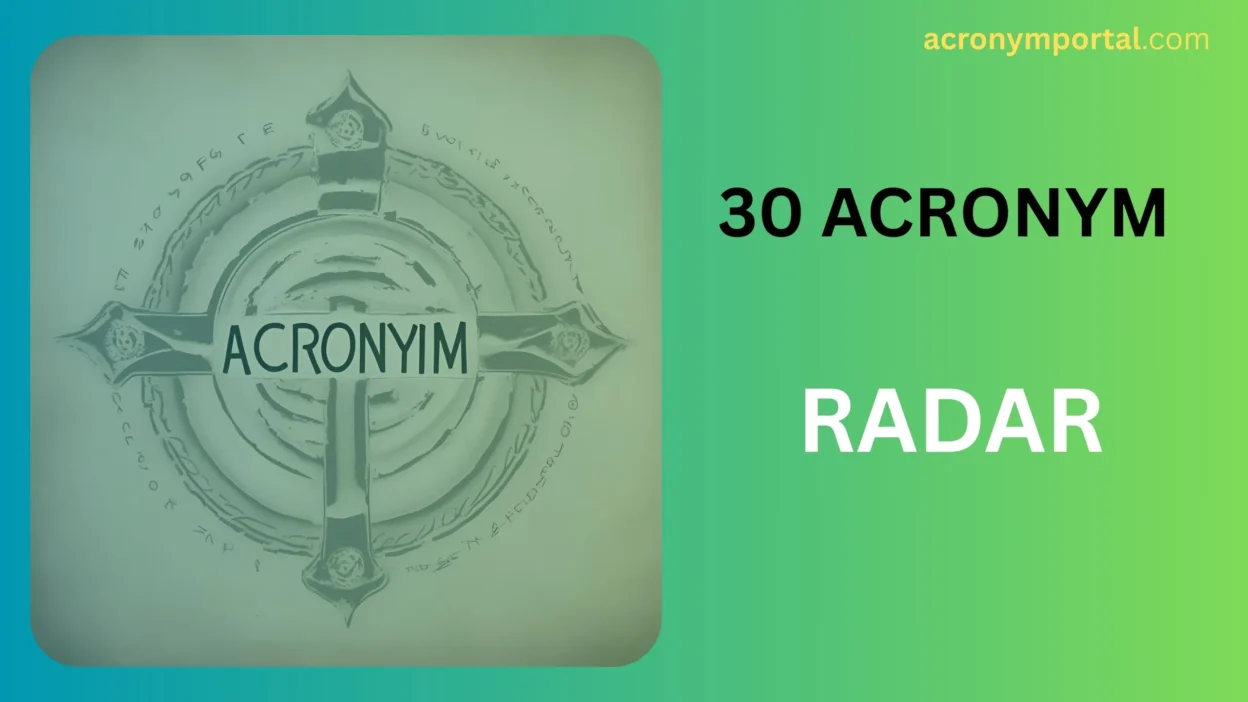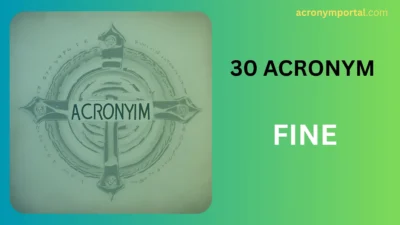Most of us know RADAR as a technology term—it stands for Radio Detection and Ranging and is used to detect objects from a distance. But in personality and behavioral terms, we can repurpose RADAR as a metaphorical acronym to describe someone who’s highly aware, intuitive, observant, and perceptive—a human “early-warning system” who picks up on subtle cues others miss.
Receptive, Aware, Discerning, Attuned, Responsive
This kind of person has a kind of emotional radar—they notice the tone shift in a room, the micro-expression on a face, or the quiet details others overlook. Whether you’re writing characters, giving feedback, or describing behavior, it helps to have specific, vivid synonyms to capture these nuances.
In this article, we’ll walk through 30 RADAR-inspired alternatives, explain their meaning, give a quick usage tip, and help you choose the right one for the tone or situation.
Understanding the RADAR Personality
A “RADAR” personality usually shows:
- Receptiveness – Open to subtle signals and energies.
- Awareness – Constantly scanning their environment.
- Discernment – Separating what’s relevant from what’s noise.
- Attunement – Emotionally or socially in sync with others.
- Responsiveness – Quick to understand and act on what they perceive.
Now, let’s dig into the words that describe this finely-tuned awareness.
30 Alternatives to RADAR (with Examples and Usage Tips)
1. Perceptive
She’s perceptive enough to catch unspoken tension.
Use when: Someone notices subtle emotional or social cues.
2. Observant
He’s incredibly observant—nothing escapes his notice.
Use when: Focus is on visual or environmental awareness.
3. Intuitive
Her intuitive sense helped her understand the team’s mood.
Use when: Inner “gut feeling” or emotional intelligence.
4. Attuned
She’s deeply attuned to others’ feelings.
Use when: Emotional or interpersonal alignment.
5. Discerning
He’s discerning when it comes to reading people.
Use when: Good judgment and insight.
6. Receptive
He’s receptive to the energy in the room.
Use when: Open to input, emotion, or subtle shifts.
7. Aware
She’s fully aware of the dynamics at play.
Use when: Conscious of both inner and outer realities.
8. Alert
He stayed alert to the shifting conversation.
Use when: Readiness to notice or react to changes.
9. Sensitive
She’s sensitive to the moods of others.
Use when: Emotionally tuned in (can be both a strength or vulnerability).
10. Insightful
His insightful comments changed the direction of the discussion.
Use when: Perceiving deep truth or meaning.
11. Mindful
She spoke mindfully, having noticed the group’s discomfort.
Use when: Thoughtful awareness combined with intentional behavior.
12. Vigilant
He remained vigilant throughout the meeting.
Use when: Careful watchfulness, often for safety or risk.
13. Sharp
She has a sharp eye for inconsistencies.
Use when: Quick to notice or understand.
14. Keen
He has a keen sense for when something’s off.
Use when: High level of attentiveness or enthusiasm.
15. Empathic
She’s empathic enough to pick up on people’s pain.
Use when: Emotional sensitivity and care.
16. Curious
He’s always curious about what’s really going on beneath the surface.
Use when: Investigative or inquisitive awareness.
17. Analytical
She analytically examined the team’s behavior.
Use when: Rational, structured awareness.
18. Focused
He remained focused on the speaker’s tone and body language.
Use when: Undistracted and deliberately attentive.
19. Prudent
She made prudent decisions based on what she observed.
Use when: Careful and wise attention to detail.
20. Conscious
He was conscious of how his words might affect the room.
Use when: Thoughtful, deliberate awareness.
21. Reflective
She was reflective, picking up meaning between the lines.
Use when: Quietly thoughtful and observant.
22. Strategic
He noticed the gap and made a strategic pivot.
Use when: Awareness directed toward achieving goals.
23. Responsive
She’s responsive to subtle shifts in mood or behavior.
Use when: Ability to notice and act accordingly.
24. Watchful
He remained watchful without being obvious.
Use when: Quiet, ongoing observation—can imply caution.
25. Tactful
She responded tactfully after noticing his discomfort.
Use when: Social/emotional awareness guiding word choice.
26. Reflexive
He had a reflexive sense for when something wasn’t right.
Use when: Fast, almost unconscious awareness.
27. Informed
She was well-informed, always tuned into what others missed.
Use when: Awareness due to effort or intelligence gathering.
28. Detail-oriented
He’s detail-oriented enough to spot a shift in behavior patterns.
Use when: Meticulous attention to specifics.
29. Anticipatory
She has an anticipatory instinct—she’s always one step ahead.
Use when: Future-focused awareness and readiness.
30. Awake
He’s just… awake. Present, aware, grounded.
Use when: Poetic or spiritual tone; general alertness.
How to Choose the Right RADAR Alternative
🔍 Tone
- Formal/Professional: Discerning, Analytical, Vigilant
- Emotional/Social: Intuitive, Attuned, Empathic
- Creative/Narrative: Keen, Awake, Insightful
- Strategic/Leadership: Strategic, Responsive, Prudent
💬 Context
- For fiction and storytelling: Words like Observant, Watchful, Reflective give depth to characters.
- For leadership or teamwork: Use Perceptive, Responsive, Attuned to show social intelligence.
- For mindfulness or coaching: Go with Mindful, Conscious, Empathic.
🌍 Cultural and Emotional Sensitivity
Some cultures place a high value on indirect awareness and emotional attunement, while others prioritize direct observation and logic. Choosing between “empathic” and “analytical” changes not just the meaning, but the cultural flavor of your description.
Conclusion
The RADAR mindset helps us detect what isn’t said, notice the invisible, and respond with clarity and grace.
Whether you’re capturing the nuance of a character, offering a compliment, or strengthening your own communication, these 30 alternatives give you a richer vocabulary to describe perception in action.
Words can either blunt or sharpen what you observe—so choose the one that feels just right for your tone, goal, and audience.




